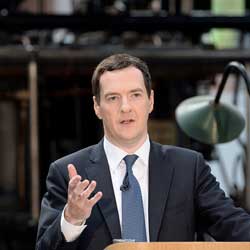In just over an hour the Chancellor delivered the combined Autumn Statement and Spending Review. The spending review, first one in five years, allocated over £4 trillion of Government spending for the next five years. The main highlight is the scrapping of the intended cuts to Tax Credits, but there are many others hidden within the 154 page statement. Read on to get a breakdown of the key points found so far.
The labour market remains strong and employment rates continue to show growth. OBR forecasts show real earnings growing. House prices are still rising, at a rate of 6.2 percent in 2015 and expected to continue at an average of 5 percent per year through to 2020. Household debt levels are falling and interest rates continue be held due to low inflation through falling food, other goods and energy prices.
As predicted the forecasts for deficit reduction have been revised, with a £10bn surplus still on target by 2020 but the rate of the change updated. A major part of achieving the surplus was via the £12bn saving from the cuts package - this included £4.4bn from major changes to Tax Credits. The headline news here is that all Tax Credit cuts are to be abandoned with thresholds, taper etc remaining the same as they are currently - only the disregard is halved from last year, but that deals with rises and falls in income. The Chancellor is confident of gaining the savings through other welfare areas and Department of Work and Pension efficiency savings. For example, Job Centres are to be co-located within existing council buildings, DWP budget reduced by 14 percent and new terms imposed for housing benefit and pension credit claimants. Business department budget cut by 17 percent. HMRC will be committed to providing a personal tax account online for every UK individual and business by 2020.
Another prediction of the rise to the State Pension was confirmed. The basic rate will rise to £119.30 per week from April 2016. People claiming the pension credit but then leaving the UK for more than a month will see payments stopped. Job seekers claiming JSA will have to visit Job Centres weekly for the initial three months of their claim.
The UK is still the fastest growing economy since 2010, joint with the US, and the growth forecast from the previous Budget remains unchanged at 2.4 percent. Borrowing is set to fall over the course of the next four years, with spending rising. Efficiency savings will lead to Governmental department spending falling by 0.8 percent each year with the Department of Transport spending falling by 37 percent - due to provision of further online services. Councils will be able to keep revenue from business rates by 2020 and will receive an additional £10m to help the homeless.
NHS budget will rise alongside efficiency savings to see a real term cash boost of £41bn by 2020. Caps on places for training nurses are to be scrapped with aims of reaching 10,000 new nurses. A so-called ‘tampon tax’ to be impost by charging VAT on women’s sanitary products with the proceeds given to women’s health charities.
Security requirements will keep the Police budget unchanged, but forces are expected to make efficiency improvements. Additional funds are added to the Defence budget - a rise of £6bn over 5 years.
Education budget to be protected, with £23bn spent on building new schools.
Surcharge to apply on top of existing stamp duty rates for Buy-to-Let and second homes from April 2016 - the extra 3 percent would raise the Treasury around £1 bn alone. Shared ownership rules to be relaxed and the Help-to-Buy scheme extended for London to allow home buyers with a 5 percent deposit to borrow a further loan from the Government of up to 40 percent of the property value. The Government remains committed to building 400,000 new affordable homes by 2020.
Travel news with reforms to the compensation rules for vehicle insurance. Changes here will take between £40 and £50 off the average annual policy.
Aside from the above, there are no other changes described for the 2016-17 tax rates and allowances. These were already provided following the Summer Budget and we have now updated our calculators with the published figures.
Over the rest of day expect further scrutiny of the statement by media and political commentators.



